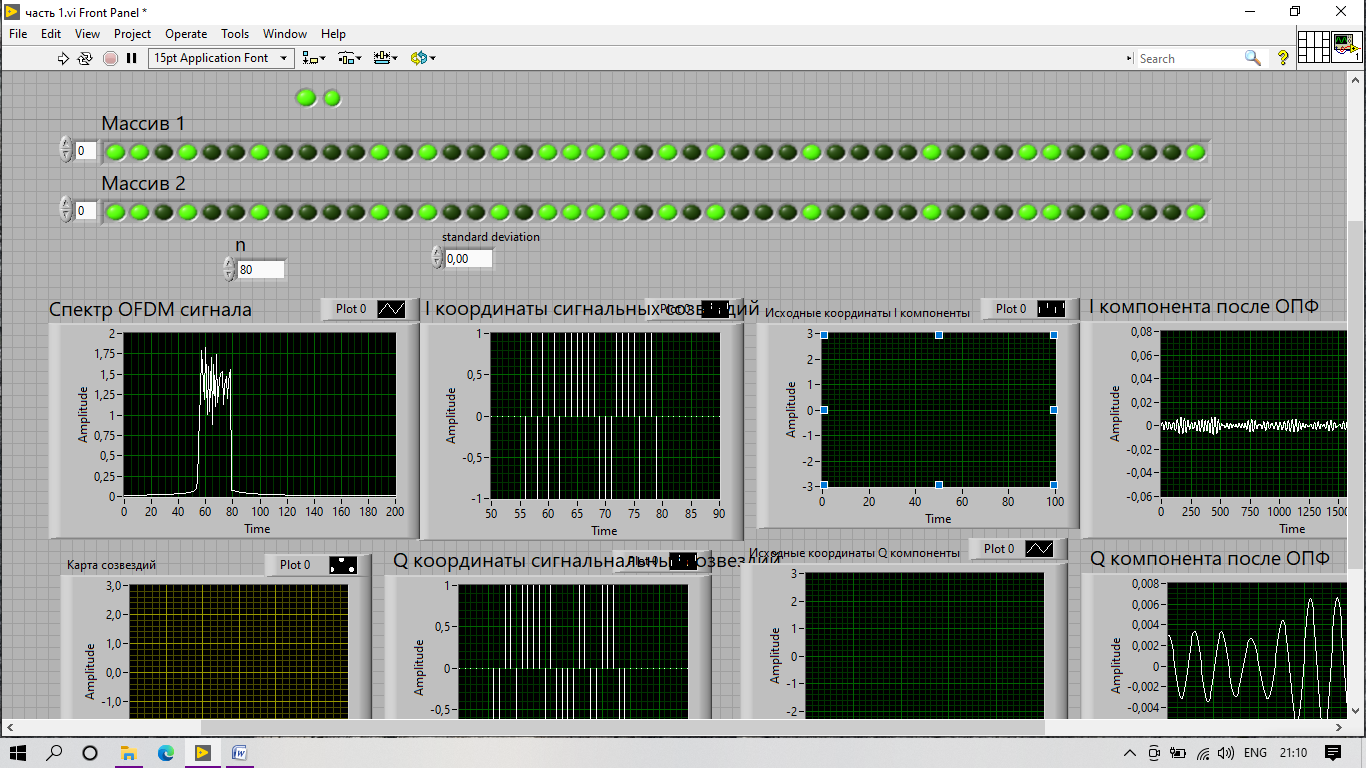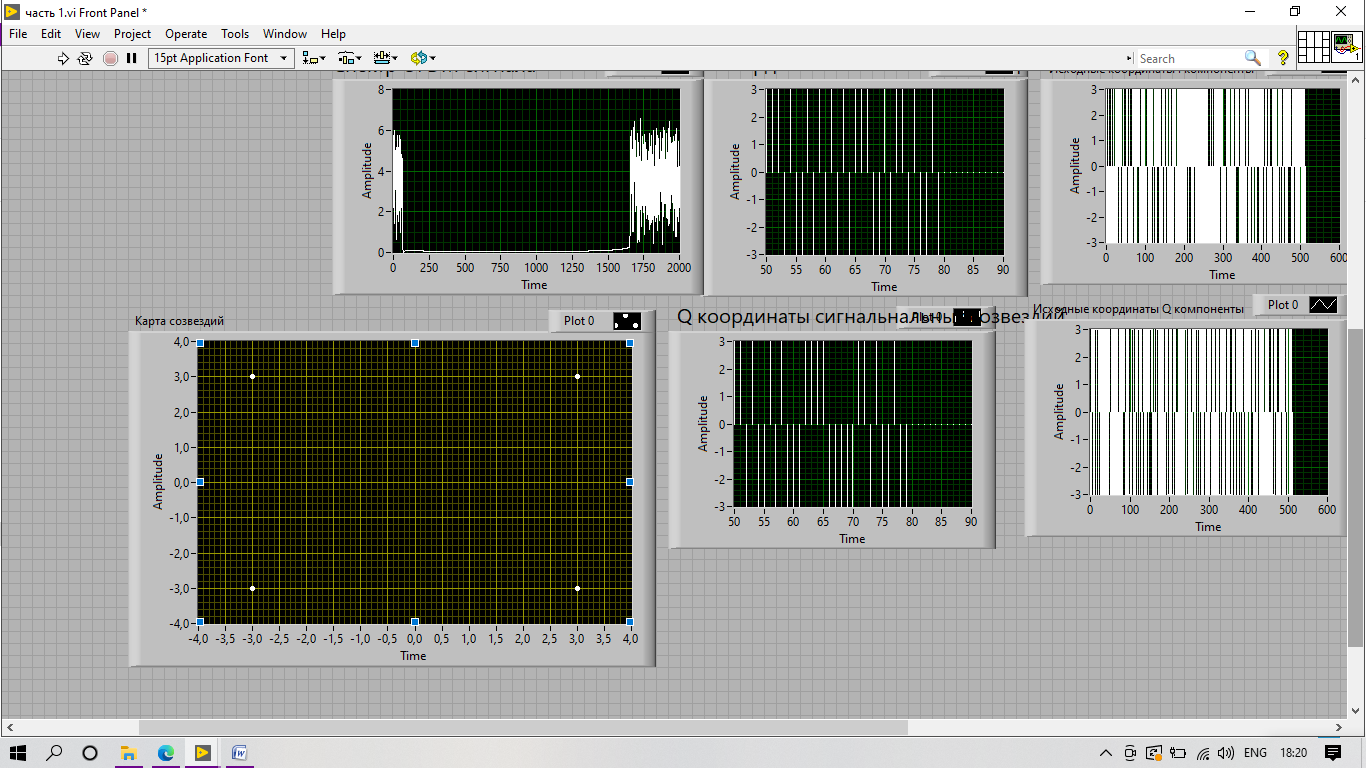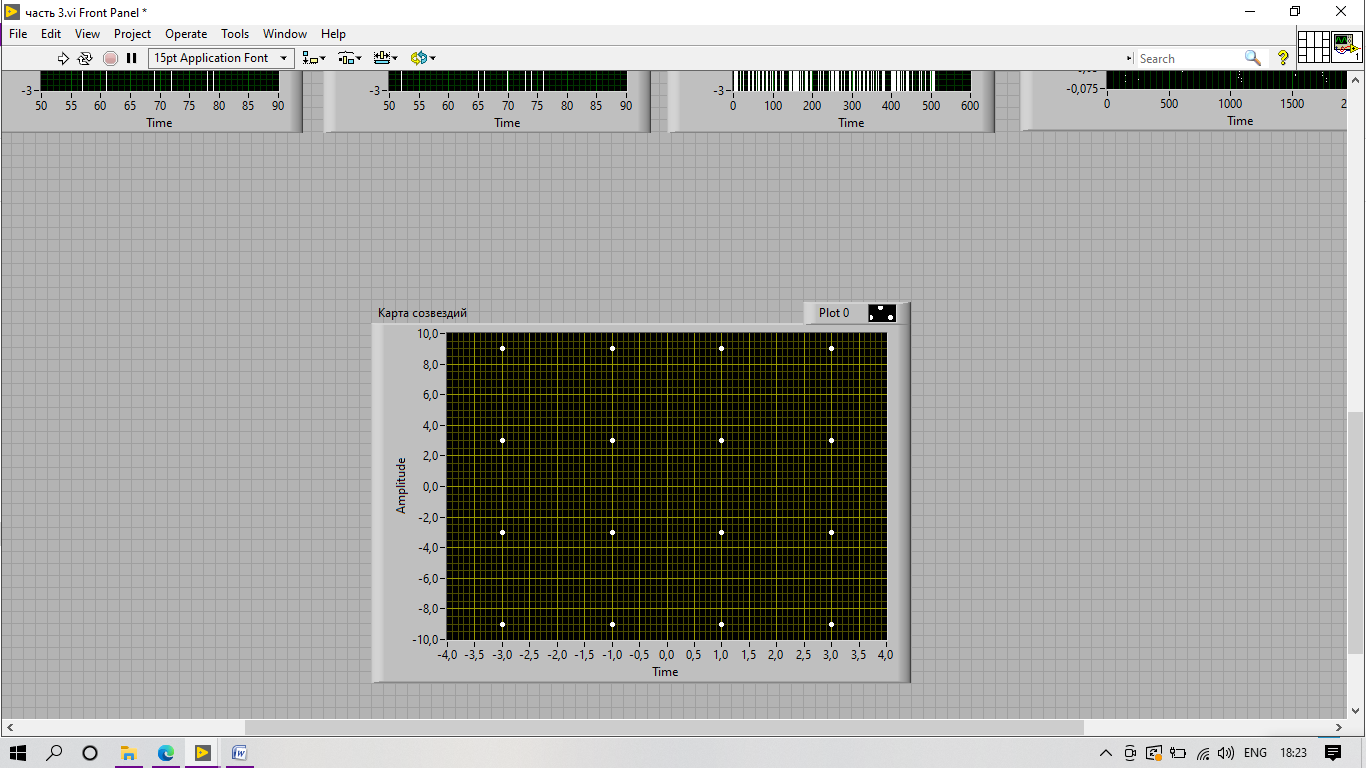Spectrum efficiency in wireless communication systems is becoming increasingly important as a result of the rapidly growing demand for frequency resources, which is associated with an increase in the number of radio facilities and an increase in the volume of information transmitted. The modulation methods used until now have long ceased to satisfy in terms of information transmission rate and spectrum width, since the signal shaping is carried out according to the principle that one signal equals one bit. Currently, there is an active transition to spectrally efficient methods of information transmission using OFDM modulation, the spectrum of which is shown in Picture 1. OFDM modulation has a number of advantages:
- ability to withstand difficult channel conditions;
- channel equalization is simplified;
- low symbol rate.
The disadvantages of OFDM are:
- high-precision synchronization in time and frequency is required;
- the use of guard intervals reduces the spectral efficiency of the method;
- sensitivity to Doppler frequency shift.

Picture 1. OFDM signal spectrum
An OFDM data link is used in many modern high bandwidth, high data rate wireless systems, including Wi-Fi, LTE data transmission systems, LDACS-1, and many others.
With OFDM modulation, each subcarrier is modulated with its own constellation map; the amount of information transmitted over the radio channel depends on the position of these maps. Accordingly, the higher the positioning of the card, the more information can be transmitted over such a channel. But with an increase in positionality, there is a deterioration in noise immunity. You cannot endlessly increase the positioning of constellation maps. From a technical point of view, positioning is limited by the capabilities of radio communication equipment and the level of noise and interference in the channel.
At the moment, the constellations of QPSK, 16 QAM maps and their modifications in the form of an offset are widely used in radio communications. Examples of such cards are shown in Picture 2 and 3.

Picture 2. QPSK

Picture 3. 16 QAM
Picture 4 shows the structure of the quadrature components of the signal constellations. It includes:
ФИС - information signal generator;
ППКП - serial-to-parallel code converter;
ЦАП - digital-to-analog converter;
ПАК - analog-to-code converter;
РС - shift register;
ОПФ - inverse Fourier transform.

Picture 4. Quadrature component generator
The input bit sequence is modeled by the FIS block, the output of which is fed to the converter, where the code is converted from serial to parallel. The signal from the control panel is fed to the DAC, which forms the voltage levels for the PAK unit. This block generates the quadrature components of the constellation using the voltage levels coming from the DAC. The components of the quadrature signal are fed to the PC, which is designed to shift the components of the generated synthetic spectrum. The level of the offset will determine the number of harmonics used in the inverse Fourier transform. The signal Re and Im formed in this way is fed to the quadrature modulator of the transmitter.
Thus, the virtual instrument is versatile and allows you to generate most of the constellation maps used. By providing a bit change for each of the constellations, it is possible to organize a covert transmission of information.
Список литературы
- Федосов, В.П. Нестеренко, А.К. Цифровая обработка сигналов в LabVIEW. – ДМК Пресс, 2007. – 456 с.
- Куликов, Г.В., Нгуен, В.З. Влияние фазоманипулированной помехи на помехоустойчивость корреляционного демодулятора сигналов с многопозиционной фазовой манипуляцией. – Российский технологический журнал, 2019. – 7(2), – С. 18-28. – URL: https://doi.org/10.32362/2500-316X-2019-7-2-18-28.



